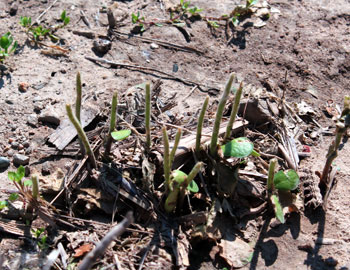When to assess hail damage to crops
It’s difficult to determine the degree of stand loss and leaf damage corn and soybeans sustained from hail immediately after storms. Waiting seven to 10 days will allow you to see which plants survived.
Hail damage to corn and soybeans that are in the vegetative stage has less impact on yield than if corn is tasselling or soybeans have pods. In the vegetative stage, the greatest risk to yield is stand loss.
Stand assessment
One of the most important assessments after a hail storm is an accurate stand assessment. First, determine what the stand was prior to the storm, possibly by doing stand count on a field planted under similar conditions that did not get hail. Then, seven to 10 days after the storm, assess the number of living plants in the hail-damaged field. Corn plants that are “crippled,” meaning the leaves are not emerging correctly, should be counted as lost plants. This will give you an indication of the stand loss. Stand can be assessed sooner, but because the growing point of small corn plants is still below ground, the viable stand may be under-estimated.
Corn: If the original stand was 32,000 plants per acre and after the storm there are 10,000 plants per acre, you can expect a 45 percent yield loss due to stand.
Soybeans: If the original stand was 125,000 and the remaining stand is 70,000 plants per acres, you can expect an 18 percent yield reduction due to stand. For more information on assessing hail damage to soybeans, see the Michigan State University Extension article "Assessing hail damage to soybeans in the early vegetative stages."
Defoliation loss
The percentage of leaf area lost due to the storm is also an important factor. However, this is of greater concern in the reproductive stages of the plant.
Corn: When corn is at the seven leaf stage and 85 percent of the leaf area is destroyed, you can expect a 7 percent yield loss.
Soybeans: With soybeans, leaf loss is only a major concern in the reproductive stage of the bean, so at this stage, if the plant survives, it should not cause a loss. However, if the hail damage has removed all leaf material from the stem of the plant, you should consider the plant dead. Green leaf tissue is the key to generating regrowth. For more information about evaluating crop damage, the following publication from the University of Minnesota is available: The Soybean Growers Field Guide For Evaluating Crop Damage And Replant Options.
Although there are other factors that can impact yield, the greatest concern during the vegetative stage of development is loss of stand. The pictures below are of corn and soybeans in central Michigan that were damaged by hail on June 17, 2013. Significant damage was done to the leaves and the stem. These pictures were taken just three days after the storm. To accurately assess the stand, these fields should be visited between June 24 and 27. At that time, the producer will be able to determine which plants survived.


Soybean field (left) and corn field (right) damaged by hail on June 17, 2013.
Photo credits: Phil Kaatz, MSU Extension
There are numerous good resources available to help assess hail damage. A couple of these resources include the National Corn Handbook NCH-1, “Assessing Hail Damage to Corn,” and the University of Nebraska Lincoln Extension Publication EC-128, “Evaluating Hail Damage to Soybeans.” Your crop insurance adjuster and Michigan State University Extension local educator are also valuable resources to help make damage assessments and evaluate potential action to take.
References
- Assessing Hail Damage to Corn, National Corn Handbook NCH-1
- Evaluating Hail Damage to Soybeans, University of Nebraska Lincoln Extension Publication EC-128
- The Soybean Growers Field Guide For Evaluating Crop Damage And Replant Options, University of Minnesota



 Print
Print Email
Email


